Sports
What Are The Games Being Played In The Olympic Games?
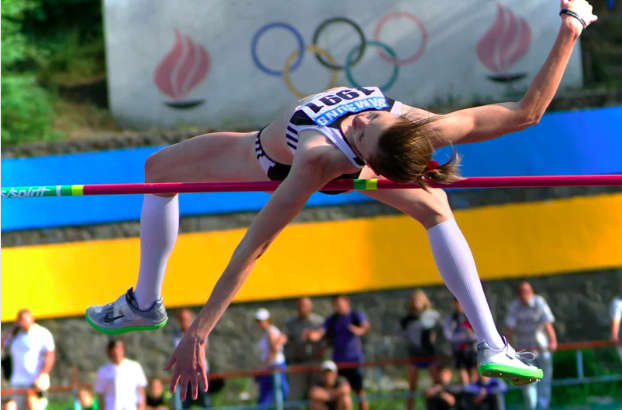
What Are The Games Being Played In The Olympic Games?
The Olympic Games are a global spectacle, showcasing the pinnacle of athletic achievement and human excellence. But beyond the medals and the glory, what exactly are the games that make up this historic event? In this comprehensive guide, we delve into the various sports and disciplines that comprise the Olympic Games, exploring their origins, rules, and significance.
Exploring the Summer Olympic Games: A Diverse Showcase of Athleticism
The Summer Olympic Games represent the epitome of athletic prowess, boasting a wide array of sports and disciplines that captivate audiences worldwide. Let’s delve deeper into the various facets of the Summer Olympics, exploring the diverse range of sports that athletes compete in to etch their names in the annals of Olympic history.
1. Track and Field: The Heartbeat of the Olympics
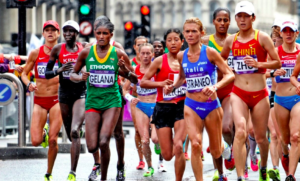
Track and field events form the cornerstone of the Summer Olympics, encompassing a myriad of disciplines that test speed, endurance, and strength. From the lightning-fast sprints to the awe-inspiring feats of the field events, track and field competitions never fail to deliver moments of sheer athleticism and drama.
- Sprints: The sprint events, including the 100m, 200m, and 400m races, showcase explosive speed and raw power as athletes dash towards the finish line in a blur of motion.
- Distance Running: From the grueling marathon to the tactical 1500m race, distance running tests athletes’ endurance and mental fortitude as they push their bodies to the limit over long distances.
- Hurdles: Hurdling events add an extra layer of challenge, requiring athletes to navigate barriers with precision and agility while maintaining top speed.
- Field Events: On the field, athletes compete in disciplines such as the long jump, high jump, triple jump, pole vault, shot put, discus throw, and javelin throw, showcasing remarkable feats of strength, technique, and coordination.
2. Aquatic Excellence: Swimming and Diving

Aquatic sports hold a prominent place in the Summer Olympics, with swimming and diving events captivating audiences with displays of grace and athleticism in the water.
- Swimming: Swimmers compete in various strokes, including freestyle, backstroke, breaststroke, butterfly, and individual medley races, showcasing speed, technique, and endurance in the pool.
- Diving: Diving events feature breathtaking dives from springboards and platforms, with divers executing intricate maneuvers and somersaults in mid-air before making a splashless entry into the water below.
3. Artistry in Motion: Gymnastics
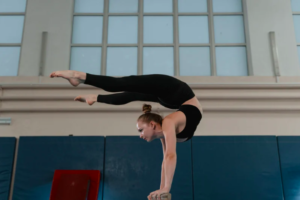
Gymnastics combines athleticism with artistry, captivating audiences with stunning displays of agility, strength, and grace. Divided into artistic gymnastics, rhythmic gymnastics, and trampoline events, gymnastics showcases the beauty and precision of human movement.
- Artistic Gymnastics: Athletes perform gravity-defying flips, twists, and balances on various apparatus, including the floor exercise, vault, uneven bars, and balance beam, showcasing strength, flexibility, and poise.
- Rhythmic Gymnastics: Rhythmic gymnasts demonstrate elegance and fluidity in their routines, incorporating elements of dance, gymnastics, and ballet while manipulating apparatus such as hoops, ribbons, balls, clubs, and ropes.
- Trampoline: Trampoline gymnasts showcase aerial acrobatics, performing high-flying flips and twists on a springy trampoline surface with precision and control.
4. Team Spirit: Team Sports
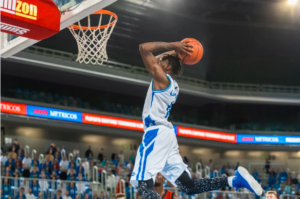
The Summer Olympics also feature a range of team sports that foster camaraderie, teamwork, and competitive spirit among athletes from around the world.
- Basketball: Basketball teams compete for gold on the hardwood court, showcasing skill, athleticism, and teamwork in fast-paced, high-scoring games.
- Soccer (Football): Soccer, or football, is a global phenomenon, with nations vying for supremacy on the pitch in intense matches that electrify fans and spectators alike.
- Volleyball: Volleyball and beach volleyball events feature fast-paced action and strategic play as teams battle it out for Olympic glory on the court or the sand.
- Water Polo: Water polo combines swimming, endurance, and ball-handling skills as teams compete in a fast-paced aquatic sport that requires speed, agility, and tactical acumen.
5. Cultivating Olympism: Other Sports and Disciplines

Beyond the marquee sports, the Summer Olympics also include a diverse array of sports and disciplines that showcase the breadth and depth of human athleticism and achievement.
- Cycling: Cycling events encompass road cycling, track cycling, mountain biking, and BMX racing, with athletes pushing the limits of speed and endurance on two wheels.
- Tennis: Tennis players compete in singles and doubles matches, showcasing skill, power, and finesse on the court as they vie for Olympic gold.
- Rowing: Rowers navigate the water with precision and power in rowing events, demonstrating strength, technique, and teamwork in pursuit of victory.
- Triathlon: Triathletes test their endurance and versatility in the ultimate multisport challenge, combining swimming, cycling, and running in a grueling test of athleticism.
The Summer Olympic Games offer a captivating blend of sports and disciplines, uniting athletes from around the world in the pursuit of excellence and sporting glory. From the track to the pool, the court to the field, the Summer Olympics showcase the best of human athleticism, inspiring generations to reach for their dreams and push the boundaries of what is possible in sport.
Exploring the Winter Olympic Games: A Celebration of Snow and Ice
The Winter Olympic Games offer a dazzling spectacle of sports and competitions set against the backdrop of snow-capped mountains and icy landscapes. Let’s delve into the diverse array of events that define the Winter Olympics, from the adrenaline-fueled thrills of snowboarding to the precision and grace of figure skating.
1. Alpine Skiing: Racing Down the Mountain

Alpine skiing takes center stage at the Winter Olympics, with athletes hurtling down snow-covered slopes at breakneck speeds in a test of skill, agility, and courage.
- Downhill: In the downhill event, skiers tackle steep, winding courses with sheer drops and blazing speeds, navigating gates and turns with split-second precision.
- Slalom: Slalom races challenge skiers to weave through a series of closely spaced gates on a shorter, more technical course, requiring quick reflexes and impeccable technique.
- Giant Slalom: Giant slalom combines elements of speed and precision, with skiers navigating a longer course marked by wider turns and gates spaced farther apart.
- Super-G: The super-G event strikes a balance between speed and technique, featuring a course that is longer and faster than slalom but more technical than downhill.
2. Snowboarding: Shredding the Slopes

Snowboarding brings a dose of excitement and flair to the Winter Olympics, with athletes showcasing gravity-defying tricks and maneuvers on the slopes and in the halfpipe.
- Halfpipe: Halfpipe competitions see snowboarders soaring through the air, executing spins, flips, and grabs while navigating the curved walls of a snow-filled halfpipe.
- Slopestyle: Slopestyle events feature a series of jumps, rails, and obstacles that challenge riders to showcase their creativity and skill in a freestyle setting.
- Big Air: Big air competitions push the boundaries of aerial snowboarding, with riders launching off massive jumps to perform breathtaking tricks and stunts high above the snow.
3. Figure Skating: Elegance and Precision on Ice
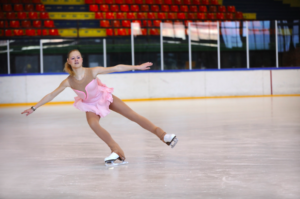
Figure skating captivates audiences with its combination of athleticism, artistry, and grace, as skaters glide across the ice with effortless beauty and precision.
- Singles: Singles skating events feature individual skaters performing jumps, spins, and intricate footwork in captivating routines set to music, showcasing their technical skill and artistic expression.
- Pairs: Pairs skating pairs up male and female skaters who perform synchronized elements and lifts together, blending strength, trust, and coordination in mesmerizing performances.
- Ice Dance: Ice dance competitions focus on the art of dance on ice, with couples performing choreographed routines that highlight fluidity, emotion, and storytelling in their movements.
4. Ice Hockey: The Fast and Furious Game

Ice hockey brings the intensity and excitement of team sports to the Winter Olympics, with fast-paced action and fierce competition on the ice.
- Men’s Hockey: Men’s ice hockey teams compete for Olympic gold in high-energy matches that showcase speed, skill, and physicality on the rink.
- Women’s Hockey: Women’s ice hockey has gained prominence in recent years, with skilled athletes battling it out for supremacy in fast-paced and thrilling games.
5. Nordic Combined: A Test of Endurance and Skill

Nordic combined combines the disciplines of ski jumping and cross-country skiing, challenging athletes to excel in both speed and precision on snow and in the air.
- Ski Jumping: Ski jumpers launch themselves off towering ramps, soaring through the air with grace and style before landing with precision on the snow below.
- Cross-Country Skiing: Cross-country skiers compete in long-distance races across varying terrain, showcasing endurance, technique, and tactical prowess as they navigate the course.
The Winter Olympic Games offer a captivating showcase of sports and competitions that celebrate the beauty and excitement of winter sports. From the thrill of downhill skiing to the elegance of figure skating, the Winter Olympics inspire athletes and spectators alike with moments of athleticism, artistry, and sheer determination on snow and ice.
Unveiling the Paralympic Games: Empowering Athletes of Determination
The Paralympic Games stand as a testament to the power of resilience, determination, and human spirit, providing a platform for athletes with disabilities to showcase their exceptional talents and compete at the highest level of sporting excellence. Let’s explore the diverse and inspiring events that make up the Paralympic Games, highlighting the incredible achievements of athletes who overcome obstacles with courage and determination.
1. Wheelchair Racing: Speed and Strength on the Track

Wheelchair racing is a thrilling and fiercely competitive event at the Paralympic Games, where athletes propel themselves forward with remarkable speed and agility using specially designed racing wheelchairs.
- Sprint: In sprint races, athletes compete over short distances, pushing themselves to the limit with explosive bursts of speed around the track.
- Marathon: Marathon events test athletes’ endurance and stamina as they navigate grueling courses over long distances, showcasing their strength and determination from start to finish.
2. Wheelchair Basketball: The Power of Teamwork

Wheelchair basketball is a dynamic and fast-paced team sport that captivates audiences with its skillful plays, intense competition, and spirit of camaraderie among players.
- Team Events: In team events, players maneuver their wheelchairs with precision and agility, passing, dribbling, and shooting with remarkable skill and coordination.
- Inclusive Sport: Wheelchair basketball is an inclusive sport that welcomes athletes of all abilities, fostering a sense of unity, respect, and mutual support among players on and off the court.
3. Sitting Volleyball: Precision and Strategy
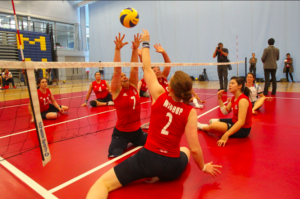
Sitting volleyball is a thrilling and fast-paced sport that showcases athletes’ agility, precision, and strategic thinking as they compete in dynamic team matches.
- Dynamic Gameplay: Sitting volleyball matches feature fast-paced rallies, quick reflexes, and strategic plays as players dive, block, and spike the ball while remaining seated on the court.
- Team Collaboration: Sitting volleyball requires seamless teamwork and communication among players, who must work together to outmaneuver their opponents and score points for their team.
4. Para Swimming: Making Waves in the Pool
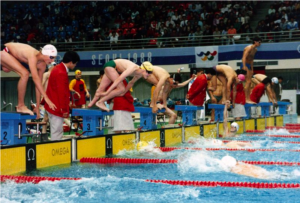
Para swimming events at the Paralympic Games highlight the incredible athleticism and skill of athletes as they compete in a variety of swimming disciplines.
- Freestyle, Backstroke, Breaststroke, Butterfly: Para swimmers compete in a range of strokes, showcasing their strength, speed, and technique as they navigate the pool with precision and determination.
- Medley Relay: Medley relay events feature teams of swimmers competing in a combination of different strokes, requiring seamless transitions and teamwork to achieve success in the pool.
5. Wheelchair Tennis: Precision and Power on the Court

Wheelchair tennis is a fast-paced and dynamic sport that showcases athletes’ agility, accuracy, and power as they compete in thrilling singles and doubles matches.
- Singles and Doubles: Wheelchair tennis players compete in both singles and doubles matches, showcasing their skill and strategy as they maneuver their wheelchairs around the court and rally with their opponents.
- Powerful Serves and Precision Shots: Wheelchair tennis players demonstrate incredible athleticism and technique, delivering powerful serves and precise shots with finesse and accuracy to outmaneuver their opponents.
The Paralympic Games inspire athletes and spectators alike with their spirit of inclusivity, determination, and sporting excellence, showcasing the incredible talents and achievements of athletes with disabilities from around the world. From the adrenaline-fueled excitement of wheelchair racing to the strategic prowess of sitting volleyball, the Paralympic Games celebrate the resilience and determination of athletes who overcome obstacles with courage and determination.
Equestrian Events at the Paralympic Games: Grace, Skill, and Collaboration
Equestrian events at the Paralympic Games epitomize the bond between horse and rider, showcasing the remarkable skill, athleticism, and determination of para-equestrian athletes as they compete in a variety of disciplines. Let’s delve into the captivating world of para-equestrian sports, where riders and their equine partners demonstrate grace, precision, and harmony in pursuit of excellence.
1. Dressage: The Art of Precision and Elegance
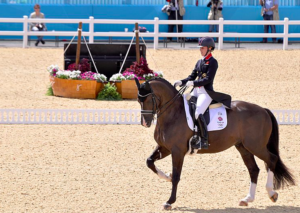
Dressage is often referred to as “horse ballet,” where horse and rider perform a series of intricate movements with precision, grace, and harmony. In para-dressage, athletes with disabilities compete in various grades based on their level of impairment, showcasing their skill and connection with their horses in a mesmerizing display of athleticism and artistry.
- Grades: Para-dressage is divided into five grades, with Grade I representing the most severe impairment and Grade V the least. Athletes compete in individual and team competitions, executing a series of compulsory movements and freestyle routines with impeccable precision and control.
- Judging: Judges evaluate each performance based on criteria such as accuracy, harmony, suppleness, and rhythm, rewarding riders who demonstrate exceptional skill, communication, and partnership with their horses.
2. Para-Showjumping: Thrills and Challenges Over Fences
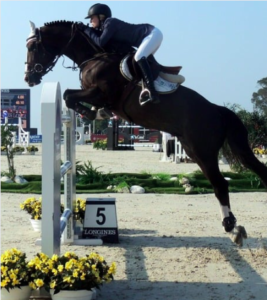
Para-showjumping tests riders’ agility, courage, and horsemanship as they navigate a series of challenging courses featuring fences, obstacles, and combinations. Riders must demonstrate skill, strategy, and precision as they guide their horses over jumps of varying heights and difficulty levels.
- Course Design: Para-showjumping courses are meticulously designed to test riders’ abilities and challenge their horsemanship skills. Riders must navigate tight turns, approach technical combinations, and clear obstacles with confidence and accuracy to achieve success in the ring.
- Classification: Riders are classified based on their level of impairment, with Grade I representing the most severe disabilities and Grade IV the least. Athletes compete individually or as part of a team, showcasing their talent, courage, and determination in pursuit of victory.
3. Para-Driving: Precision and Control in Carriage Driving
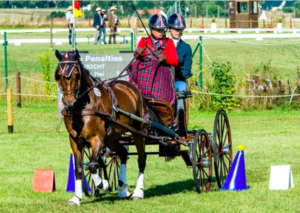
Image Source: horseillustrated.com
Para-driving, also known as carriage driving, combines the elegance of dressage with the precision of navigating a carriage pulled by a horse or team of horses. Athletes with physical disabilities compete in various classes and events, showcasing their skill, coordination, and communication with their equine partners.
- Classes: Para-driving includes both singles and pairs competitions, with athletes guiding their carriages through a series of intricate movements and patterns. Competitors must demonstrate precision, control, and teamwork as they navigate the course with finesse and grace.
- Adaptive Equipment: Para-drivers may use adaptive equipment such as reins, whip holders, and carriage modifications to accommodate their disabilities while maintaining control and communication with their horses. Athletes showcase their adaptability, skill, and determination in harnessing the power and agility of their equine partners.
4. Vaulting: Dynamic Performances on Horseback
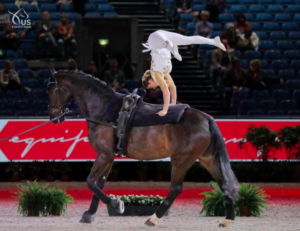
Image Source: uset.org
Vaulting combines gymnastics, dance, and acrobatics on horseback, with athletes performing choreographed routines and exercises in harmony with their equine partners. In para-vaulting, athletes with physical disabilities compete in various grades, showcasing their strength, flexibility, and creativity in captivating performances.
- Individual and Team Events: Para-vaulting includes both individual and team competitions, with athletes demonstrating their agility, balance, and coordination while executing dynamic movements and routines atop a moving horse. Teams collaborate to perform synchronized routines, displaying precision and harmony in their performances.
- Grades: Para-vaulters are classified based on their level of impairment, with Grade I representing the most severe disabilities and Grade V the least. Athletes compete in compulsory and freestyle routines, showcasing their athleticism, creativity, and connection with their equine partners in thrilling displays of equestrian artistry.
Equestrian events at the Paralympic Games celebrate the unique bond between horse and rider, showcasing the extraordinary talents and achievements of para-equestrian athletes from around the world. From the precision and elegance of dressage to the thrills and challenges of showjumping, para-equestrian sports exemplify the spirit of determination, collaboration, and sporting excellence on the global stage.
Combat Sports at the Paralympic Games: Strength, Strategy, and Determination
Combat sports at the Paralympic Games offer a compelling blend of athleticism, skill, and tactical prowess as athletes with physical disabilities compete in a variety of disciplines. From judo to wheelchair fencing, these sports showcase the resilience, courage, and competitive spirit of para-athletes as they strive for victory on the global stage. Let’s explore the diverse world of combat sports in the Paralympic Games, where strength, strategy, and determination reign supreme.
1. Judo: The Gentle Way of Overcoming Adversity

Judo, often referred to as the “gentle way,” is a dynamic martial art that emphasizes technique, leverage, and timing to overcome opponents. In para-judo, athletes with visual impairments or physical disabilities compete in various weight categories, demonstrating skill, agility, and determination on the tatami.
- Rules and Regulations: Para-judo follows the same rules and scoring system as able-bodied judo, with athletes aiming to score ippon (a full point) through throws, holds, or submissions. Competitors engage in gripping battles, foot sweeps, and dynamic throws, showcasing their judo prowess and tactical acumen.
- Classification: Athletes are classified based on their level of impairment, with different weight categories ensuring fair competition. Para-judo promotes inclusivity and sportsmanship, with athletes of all abilities showcasing their strength, skill, and resilience on the mat.
2. Wheelchair Fencing: Precision and Agility in Swordplay

Wheelchair fencing combines the art of swordplay with the athleticism of wheelchair mobility, as athletes engage in fast-paced duels of skill, strategy, and precision. Competitors use specially adapted wheelchairs and fencing equipment to compete in various disciplines, including foil, épée, and sabre.
- Equipment and Adaptations: Wheelchair fencers use modified equipment and adaptive techniques to compete from a seated position, with rules governing distance, target areas, and scoring. Athletes demonstrate agility, speed, and strategic thinking as they maneuver their wheelchairs and engage in swordplay with opponents.
- Events and Categories: Wheelchair fencing features individual and team events, with athletes competing in various classifications based on their impairment. From intense one-on-one duels to strategic team matchups, wheelchair fencing showcases the dynamic athleticism and competitive spirit of para-athletes on the piste.
3. Boxing: The Sweet Science of Adaptive Combat

Boxing is a test of strength, speed, and skill, with para-boxers showcasing their athleticism and determination in the ring. In para-boxing, athletes with physical disabilities compete in adapted formats, demonstrating agility, technique, and resilience as they trade punches and vie for victory.
- Adaptations and Modifications: Para-boxers may compete in standing or seated divisions, with rules and equipment adapted to accommodate various impairments. Athletes demonstrate their boxing prowess, footwork, and defensive skills in thrilling bouts of skill and strategy.
- Weight Classes and Competition: Para-boxing features various weight classes, ensuring fair competition and exciting matchups between athletes of similar size and ability. From lightweight speedsters to heavyweight powerhouses, para-boxing showcases the diversity and talent of athletes in the ring.
4. Taekwondo: The Way of the Foot and Fist

Taekwondo is a dynamic martial art that emphasizes kicking techniques, agility, and speed, with athletes demonstrating precision and power in striking and defensive maneuvers. In para-taekwondo, athletes with physical impairments compete in adapted formats, showcasing their skill and athleticism on the mat.
- Forms and Techniques: Para-taekwondo athletes compete in various weight categories, executing kicks, punches, and blocks with precision and control. Competitors demonstrate flexibility, balance, and agility as they engage in fast-paced bouts of skill and strategy.
- Inclusivity and Participation: Para-taekwondo promotes inclusivity and diversity, with athletes of all abilities competing in individual and team events. From flying kicks to intricate footwork, para-taekwondo showcases the athleticism, determination, and spirit of para-athletes on the global stage.
Combat sports at the Paralympic Games embody the spirit of athleticism, sportsmanship, and determination, with athletes showcasing their skill, courage, and competitive spirit in thrilling displays of strength and strategy. From the dynamic throws of judo to the precision strikes of wheelchair fencing, para-athletes inspire and captivate audiences worldwide with their remarkable feats of athleticism and resilience.
Conclusion
The Olympic Games encompass a wide array of sports and disciplines, from track and field to winter sports, equestrian events to combat sports. With athletes from around the world competing at the highest level, the Olympics serve as a testament to the power of sport to unite nations and inspire greatness.
Frequently Asked Questions
How often are the Olympic Games held?
The Summer and Winter Olympic Games are held every four years, alternating between the two seasons.
How are Olympic host cities selected?
The International Olympic Committee (IOC) selects host cities through a competitive bidding process, evaluating factors such as infrastructure, accommodations, and legacy plans.
What is the Olympic motto?
The Olympic motto is “Citius, Altius, Fortius,” which is Latin for “Faster, Higher, Stronger.”
How many sports are in the Summer Olympics?
The Summer Olympics typically feature around 33 sports, with various disciplines within each sport category.
What is the significance of the Olympic rings?
The Olympic rings symbolize the unity of the five continents and the global participation in the Olympic Games. Each ring represents a different continent: Africa, the Americas, Asia, Europe, and Oceania.
Sports
The NHL Conn Smythe Trophy: Celebrating Playoff MVPs in Ice Hockey
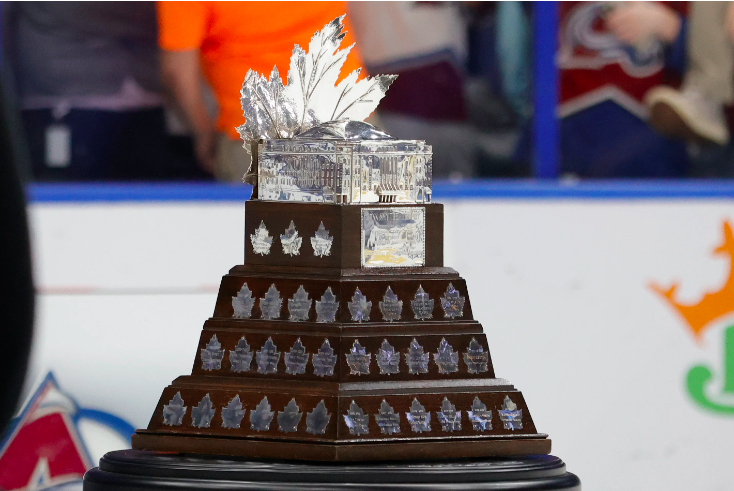
The NHL Conn Smythe Trophy: Celebrating Playoff MVPs in Ice Hockey
The NHL Conn Smythe Trophy is one of the most prestigious awards in ice hockey, given annually to the player judged to be the most valuable to their team during the NHL playoffs. Named after the former owner, general manager, and coach of the Toronto Maple Leafs, Conn Smythe, this award symbolizes excellence and clutch performance when it matters the most. Let’s dive into the rich history, notable winners, and the impact of the Conn Smythe Trophy on the sport of hockey.
The History and Origins of the Conn Smythe Trophy
Inception of the Trophy
The Conn Smythe Trophy was introduced in 1965, designed to honor the most valuable player (MVP) in the Stanley Cup playoffs. Unlike other awards that consider regular-season performance, the Conn Smythe focuses solely on playoff contributions.
Significance of Conn Smythe
Conn Smythe was a towering figure in the world of hockey. As the driving force behind the Toronto Maple Leafs, his legacy is remembered through this trophy. Smythe’s influence on the game, from his strategic innovations to his leadership, makes this award a fitting tribute to his contributions.
Criteria for Awarding the Conn Smythe Trophy
Playoff Performance
The primary criterion for the Conn Smythe Trophy is the player’s performance during the playoffs. This includes scoring, defensive play, leadership, and overall impact on the game.
Voting Process
Members of the Professional Hockey Writers’ Association (PHWA) vote to determine the winner of the Conn Smythe Trophy. Voting takes place immediately after the final game of the Stanley Cup Finals, ensuring that the entire playoff performance is considered.
Notable Conn Smythe Trophy Winners

Bobby Orr: A Legend in Defense
Bobby Orr, the legendary defenseman, was the first player to win the Conn Smythe Trophy twice. His remarkable skill and leadership helped the Boston Bruins secure Stanley Cup victories in 1970 and 1972.
Patrick Roy: Master of the Crease
Patrick Roy stands out as the only player to win the Conn Smythe Trophy three times, each with a different team. His goaltending prowess and ability to perform under pressure make him a true icon in hockey history.
Sidney Crosby: Modern-Day Maestro
Sidney Crosby, with two Conn Smythe Trophies to his name, exemplifies the blend of skill, determination, and leadership that defines a playoff MVP. His contributions to the Pittsburgh Penguins’ success have solidified his place among the greats.
Impact of the Conn Smythe Trophy on Players’ Careers
Elevating Status and Legacy
Winning the Conn Smythe Trophy elevates a player’s status within the league and cements their legacy. It is a testament to their ability to perform when it matters most and often leads to greater recognition and endorsement opportunities.
Team Dynamics
The Conn Smythe Trophy highlights the importance of individual contributions to team success. Players who win this award are often seen as leaders and pivotal figures within their teams, influencing team dynamics and future strategies.
Memorable Moments in Conn Smythe Trophy History
Jean-Sébastien Giguère’s Heroics
In 2003, Jean-Sébastien Giguère became the fifth player to win the Conn Smythe Trophy despite his team, the Anaheim Ducks, losing in the Finals. His outstanding goaltending throughout the playoffs left an indelible mark on the hockey world.
Jonathan Toews’ Leadership
Jonathan Toews’ Conn Smythe win in 2010 showcased his leadership and clutch performances. His ability to elevate his game during critical moments was instrumental in the Chicago Blackhawks’ Stanley Cup victory.
Comparing the Conn Smythe Trophy with Other NHL Awards
Hart Memorial Trophy vs. Conn Smythe Trophy
While the Hart Memorial Trophy is awarded to the regular season’s most valuable player, the Conn Smythe Trophy focuses exclusively on playoff performance. This distinction highlights the unique value of excelling under playoff pressure.
Ted Lindsay Award vs. Conn Smythe Trophy
The Ted Lindsay Award, voted on by the players, recognizes the most outstanding player in the regular season. In contrast, the Conn Smythe Trophy is determined by the media and focuses on the playoffs, offering different perspectives on player excellence.
The Legacy and Future of the Conn Smythe Trophy
Evolving Game Dynamics
As the NHL evolves, so do the attributes valued in Conn Smythe winners. The increasing speed and skill in the game mean that future winners will likely showcase a diverse range of talents, from scoring to defensive acumen.
Rising Stars
Emerging talents like Connor McDavid and Nathan MacKinnon are poised to leave their mark on the playoffs. Their potential to win the Conn Smythe Trophy reflects the ongoing evolution of hockey and the rise of new superstars.
Conclusion
The NHL Conn Smythe Trophy is more than just an award; it is a symbol of playoff excellence and a testament to the players who rise to the occasion when it matters most. From its inception to its notable winners, the Conn Smythe Trophy captures the essence of what it means to be the most valuable player in the most crucial moments of the game. As we look to the future, this prestigious award will continue to celebrate the best in hockey, honoring those who make the greatest impact in the playoffs.
Frequently Asked Questions (FAQs)
Who was the first winner of the Conn Smythe Trophy?
The first winner of the Conn Smythe Trophy was Jean Béliveau of the Montreal Canadiens in 1965.
How many times has Patrick Roy won the Conn Smythe Trophy?
Patrick Roy has won the Conn Smythe Trophy three times, the most by any player, in 1986, 1993, and 2001.
Can a player from the losing team win the Conn Smythe Trophy?
Yes, players from the losing team can win the Conn Smythe Trophy. Notable examples include Jean-Sébastien Giguère in 2003 and Roger Crozier in 1966.
How is the winner of the Conn Smythe Trophy chosen?
The winner of the Conn Smythe Trophy is chosen by a vote from the Professional Hockey Writers’ Association members after the conclusion of the Stanley Cup Finals.
Has a rookie ever won the Conn Smythe Trophy?
Yes, Patrick Roy won the Conn Smythe Trophy as a rookie in 1986, leading the Montreal Canadiens to a Stanley Cup victory with his stellar goaltending.
Sports
The NHL Hart Memorial Trophy: A Deep Dive into Hockey’s Most Prestigious Award
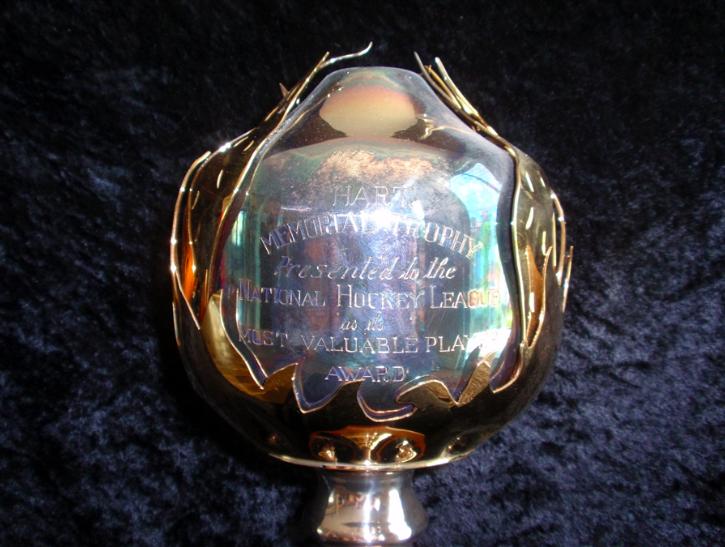
The NHL Hart Memorial Trophy: A Deep Dive into Hockey’s Most Prestigious Award
The NHL Hart Memorial Trophy stands as a testament to excellence in ice hockey, awarded annually to the player judged to be the most valuable to his team. This accolade, named after Dr. David Hart, has a storied history and significant impact on the sport. Let’s explore the origins, criteria, notable winners, and the profound legacy of the Hart Trophy.
The Origins of the Hart Memorial Trophy
Early Beginnings
The Hart Memorial Trophy was first awarded in 1924. Dr. David Hart, the father of Montreal Canadiens coach Cecil Hart, donated the original trophy. It was created to honor the player deemed most valuable to their team, a concept that has become integral to the NHL’s recognition of individual excellence.
Evolution Over the Decades
Initially, the award was based on votes from the NHL coaches. Over time, the voting process evolved to include members of the Professional Hockey Writers’ Association (PHWA), ensuring a broader and more diverse perspective in determining the winner.
Criteria for Winning the Hart Memorial Trophy
Judging Value
The Hart Trophy is unique because it focuses on a player’s value to their team rather than simply their statistical performance. This means the winner often comes from a team that has significantly benefited from their contributions, even if that team doesn’t necessarily top the standings.
Voting Process
The PHWA members cast their votes at the end of the regular season. Each voter selects their top five candidates, and points are awarded based on these rankings. The player with the highest total points is awarded the trophy.
Notable Hart Trophy Winners
Wayne Gretzky: The Great One
Wayne Gretzky’s name is synonymous with the Hart Trophy, having won it a record nine times during his illustrious career. His dominance in the 1980s with the Edmonton Oilers is a benchmark of individual excellence in the NHL.
Gordie Howe: Mr. Hockey
Gordie Howe, with six Hart Trophies to his name, exemplified longevity and consistency. His ability to perform at a high level across multiple decades made him a legend in the sport.
Recent Winners
Recent winners such as Connor McDavid and Leon Draisaitl have brought new excitement to the NHL, showcasing the blend of speed, skill, and strategic thinking that defines modern hockey.
Impact of the Hart Trophy on Careers
Boost in Recognition
Winning the Hart Trophy often elevates a player’s status in the league, leading to increased endorsement opportunities and a lasting legacy. It’s a recognition that cements a player’s place among the all-time greats.
Team Influence
The trophy also highlights the importance of individual contributions to a team’s success. Players who win the Hart are seen as pivotal to their team’s performance, often leading to leadership roles and increased responsibilities.
Controversies and Debates
Subjectivity of Value
Given the subjective nature of “value,” debates often arise about whether the right player was chosen. Factors like team success, statistical dominance, and overall influence can lead to differing opinions among fans and analysts.
Close Contests
There have been numerous instances where the voting was exceptionally close, leading to heated discussions about the merits of each candidate. These debates underscore the passion and engagement of the hockey community.
The Legacy of the Hart Memorial Trophy
Influence on the Game
The Hart Trophy has a profound impact on how players approach the game, knowing that their individual efforts could be recognized with such a prestigious award. It fosters a competitive spirit and drives players to excel.
Historical Significance
As the NHL continues to grow, the Hart Trophy remains a symbol of excellence and achievement. It connects the current generation of players with the legends of the past, preserving the rich history of the sport.
Memorable Hart Trophy Moments
Ovechkin’s Triple Crown
Alex Ovechkin’s third Hart Trophy in 2013 highlighted his scoring prowess and leadership, solidifying his place as one of the greatest goal scorers in NHL history.
Carey Price’s Historic Win
In 2015, Carey Price became the first goaltender to win the Hart Trophy in over a decade, showcasing the significant impact a stellar goaltending season can have on a team’s success.
Comparing the Hart Trophy with Other NHL Awards
The Art Ross Trophy
While the Art Ross Trophy is awarded to the league’s top scorer, the Hart Trophy takes a broader view, considering overall contributions and value. This distinction makes the Hart Trophy unique and highly coveted.
The Ted Lindsay Award
The Ted Lindsay Award, voted by the players, is often seen as a companion to the Hart Trophy. It provides a player’s perspective on who the most outstanding player is, offering another layer of recognition.
The Future of the Hart Memorial Trophy
Emerging Stars
As the NHL continues to evolve, new stars like Auston Matthews and Jack Hughes are emerging as potential Hart Trophy candidates. Their impact on the game ensures the future of the Hart Trophy remains bright.
Changing Dynamics
With the game becoming faster and more skilled, the criteria for winning the Hart Trophy may continue to adapt. Players who excel in multiple facets of the game will likely be at the forefront of future considerations.
Conclusion
The NHL Hart Memorial Trophy represents the pinnacle of individual achievement in hockey. Its rich history, the legends who have won it, and its impact on the game make it a cornerstone of NHL culture. As we look to the future, the Hart Trophy will undoubtedly continue to honor those who exemplify the best in hockey, celebrating the players who make the greatest impact on their teams and the sport.
Frequently Asked Questions (FAQs)
How many times has Wayne Gretzky won the Hart Trophy?
Wayne Gretzky has won the Hart Trophy a record nine times, showcasing his dominance in the NHL during his career.
Who was the first player to win the Hart Memorial Trophy?
The first recipient of the Hart Memorial Trophy was Frank Nighbor of the Ottawa Senators in 1924.
How is the Hart Trophy winner determined?
The Hart Trophy winner is determined by votes from members of the Professional Hockey Writers’ Association, who rank their top five candidates at the end of the regular season.
Has a goaltender ever won the Hart Trophy?
Yes, several goaltenders have won the Hart Trophy, including Carey Price in 2015 and Dominik Hasek, who won it twice in the 1990s.
What distinguishes the Hart Trophy from the Ted Lindsay Award?
While the Hart Trophy is awarded based on votes from sportswriters, the Ted Lindsay Award is voted on by the players themselves, recognizing the most outstanding player in the NHL from their perspective.
Sports
Ice Hockey: A Comprehensive Guide to the Fastest Game on Ice
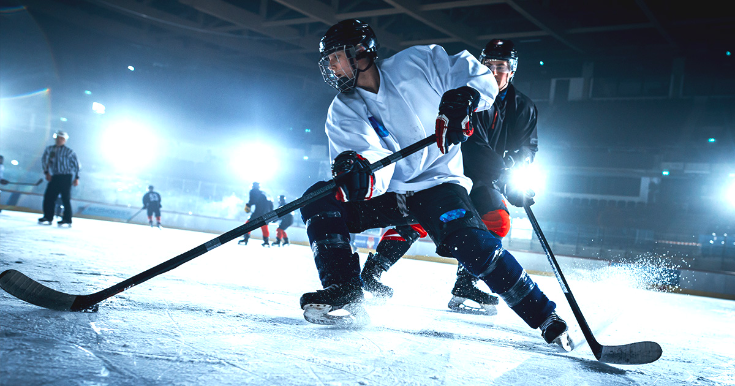
Ice Hockey: A Comprehensive Guide to the Fastest Game on Ice
Ice hockey, a thrilling and dynamic sport, captures the hearts of millions worldwide. Known for its speed, skill, and intensity, this game is played on ice and requires players to navigate a puck into the opponent’s goal using sticks. Let’s delve deep into the world of ice hockey, exploring its history, rules, equipment, strategies, and the key elements that make it one of the most exciting sports.
The History of Ice Hockey
Origins and Early Development
Ice hockey’s roots trace back to various stick-and-ball games played in Europe centuries ago. However, it was in Canada during the 19th century that the modern version of the game began to take shape. The first organized indoor hockey game took place in Montreal on March 3, 1875, a landmark event that set the stage for the sport’s evolution.
The Birth of Professional Ice Hockey
Professional ice hockey emerged in the early 20th century with the formation of leagues such as the National Hockey Association (NHA) and later, the National Hockey League (NHL) in 1917. The NHL has since become the premier professional ice hockey league globally, featuring teams from both the United States and Canada.
The Fundamentals of Ice Hockey
The Playing Surface
Ice hockey is played on a rectangular rink with rounded corners. The rink measures 200 feet by 85 feet in the NHL, with slightly larger dimensions in international play. The surface is divided into three zones: the defensive zone, the neutral zone, and the offensive zone.
Basic Rules and Objectives
The primary objective of ice hockey is to score more goals than the opposing team. Each team has six players on the ice, including a goaltender. The game consists of three 20-minute periods, with intermissions in between.
Key rules include:
- Offside: Players must not enter the offensive zone ahead of the puck.
- Icing: Shooting the puck from behind the center line past the opponent’s goal line without it being touched.
- Penalties: Infractions such as tripping, hooking, and slashing result in time in the penalty box.
Essential Equipment
Skates and Sticks
Players wear specialized ice hockey skates designed for agility and speed. Sticks are made of composite materials or wood, featuring a curved blade for better puck control.
Protective Gear
Safety is paramount in ice hockey. Players don helmets, shoulder pads, elbow pads, gloves, shin guards, and mouthguards. Goaltenders wear additional protective gear, including leg pads, chest protectors, and masks.
The Puck
The puck is a hard rubber disc, measuring three inches in diameter and one inch thick. It is frozen before games to reduce bouncing on the ice.
Game Strategies and Tactics
Offensive Strategies
Effective offensive play in ice hockey involves various strategies to outmaneuver the defense and create scoring opportunities. Common tactics include:
- Forechecking: Pressuring the opponent in their defensive zone to regain possession.
- Cycling: Moving the puck along the boards in the offensive zone to tire out defenders.
- Power Play: Capitalizing on a numerical advantage when the opposing team has a player in the penalty box.
Defensive Strategies
Defensive play aims to prevent the opposing team from scoring. Key strategies include:
- Backchecking: Forwards helping defend by skating back to their zone.
- Penalty Killing: Successfully defending while a player is in the penalty box.
- Shot Blocking: Defenders sacrificing their bodies to block shots on goal.
The Role of the Goaltender
Goaltending Techniques
Goaltenders, or goalies, play a crucial role in ice hockey. Their primary responsibility is to stop the puck from entering the net. Techniques include:
- Butterfly Style: Dropping to the knees to cover the lower part of the net.
- Stand-up Style: Remaining upright to block high shots.
- Hybrid Style: Combining elements of both butterfly and stand-up styles.
Famous Goaltenders
Legendary goaltenders such as Patrick Roy, Martin Brodeur, and Dominik Hasek have left an indelible mark on the game, showcasing extraordinary skill and athleticism.
The Culture of Ice Hockey
Fan Engagement and Traditions
Ice hockey boasts a passionate fan base, with traditions such as the playoff beard and the throwing of hats for hat-trick performances. Fans are known for their unwavering support and enthusiasm.
International Competitions
Ice hockey is a global sport, with prestigious tournaments such as the Winter Olympics, the IIHF World Championship, and the World Junior Championship highlighting international talent.
Ice Hockey Leagues and Teams
The NHL
The NHL, with 32 teams, is the pinnacle of professional ice hockey. Teams like the Montreal Canadiens, Toronto Maple Leafs, and Chicago Blackhawks have rich histories and loyal fan bases.
Other Prominent Leagues
Other notable leagues include the Kontinental Hockey League (KHL) in Russia, the Swedish Hockey League (SHL), and the American Hockey League (AHL), which serves as a development league for the NHL.
The Impact of Ice Hockey on Society
Youth Development and Community Programs
Ice hockey fosters youth development through programs like USA Hockey and Hockey Canada. These initiatives promote skills, teamwork, and sportsmanship.
Philanthropy and Social Initiatives
Many players and organizations are involved in charitable efforts, using their platform to give back to communities and support various causes.
The Future of Ice Hockey
Technological Advancements
Technological innovations, such as advanced analytics and improved equipment, are enhancing the game. The use of video review and tracking systems provides deeper insights into player performance.
Growing Global Popularity
Ice hockey’s popularity continues to grow worldwide, with increasing participation in non-traditional markets like Asia and Australia. Efforts to make the sport more inclusive and accessible are expanding its reach.
Conclusion
Ice hockey, with its rich history and dynamic gameplay, captivates fans across the globe. From the origins of the sport in Canada to its current status as a worldwide phenomenon, the game has evolved significantly. The strategies, skills, and passion involved make ice hockey one of the most exhilarating sports. Whether you’re a seasoned fan or new to the game, there’s always something exciting to discover in the world of ice hockey.
Frequently Asked Questions (FAQs)
What is the significance of the Stanley Cup in ice hockey?
The Stanley Cup is the oldest professional sports trophy in North America, awarded annually to the NHL champion. Winning the Stanley Cup is the pinnacle of success in ice hockey.
How does the NHL draft work?
The NHL draft allows teams to select eligible players from amateur or junior leagues. The draft order is determined by the previous season’s standings, with the worst-performing teams picking first.
What is a hat trick in ice hockey?
A hat trick occurs when a player scores three goals in a single game. Fans traditionally celebrate by throwing hats onto the ice.
Who holds the record for the most goals in an NHL season?
Wayne Gretzky holds the record for the most goals in an NHL season, with 92 goals scored during the 1981-82 season.
How do power plays and penalty kills impact a game?
Power plays give a team a numerical advantage due to an opponent’s penalty, increasing scoring chances. Penalty kills involve successfully defending while down a player, demonstrating strong defensive skills.
-

 NBA4 months ago
NBA4 months agoLaMelo Ball Net Worth: A Comprehensive Look at the NBA Star’s Financial Empire
-
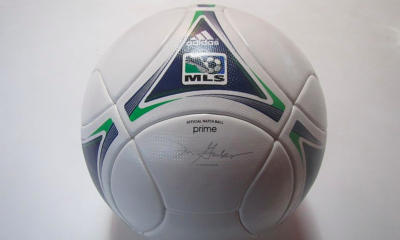
 Football6 months ago
Football6 months agoMeet the World Football Celebrities and Their Stories
-

 Football5 months ago
Football5 months agoEuro 2024: Alvaro Morata Speaks Out About ‘No Respect’ in Spain
-

 Game5 months ago
Game5 months agoThe Ultimate Guide to General Multi-Sport Events
-
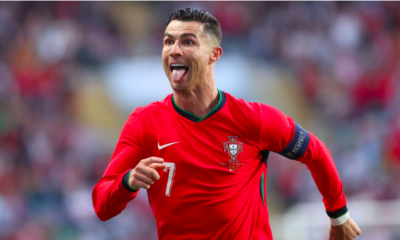
 Football5 months ago
Football5 months agoRonaldo’s Business Ventures and Investments (CR7 Brand)
-

 Football5 months ago
Football5 months agoEuro 2024 Power Rankings: Spain Remains Dominant Ahead of Semifinals
-

 Wrestling2 months ago
Wrestling2 months agoJey Uso Biography and Net Worth: The Rise of a WWE Superstar
-
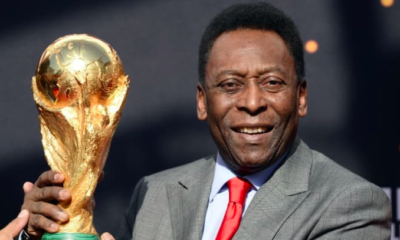
 Sports6 months ago
Sports6 months agoPele: The Legendary Journey of Football’s Greatest Icon | The Immortal King of Football




